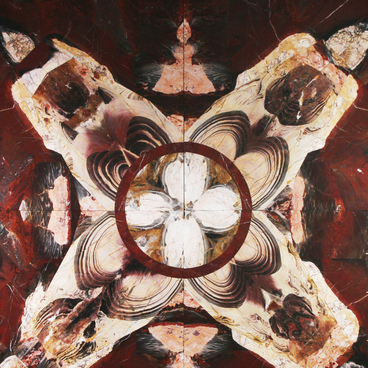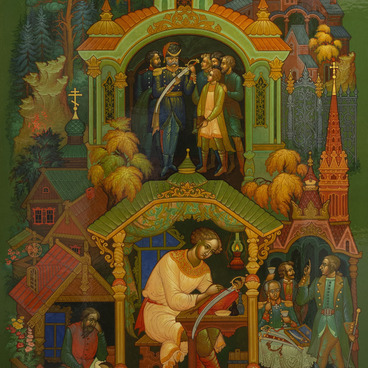The Museum of Stone-Cutting and Jewelry Art houses a rectangular tabletop. Its dimensions are 53 by 35 centimeters. It was made of Fominsky marble — a yellow-gray stone that was mined in the vicinity of the city of Dvurechensk in the Urals. The pattern on its surface resembled both the tree growth rings and a landscape: in its colored layers and veins, one could recognize rivers and lakes, rocky shores, mountains and a cloudy sky.
In the Urals, marble has been mined since February 1721. The first head of the Ural and Siberian mining plants, Vasily Tatishchev, suggested to build a new mining plant on the Iset River — over time the city of Yekaterinburg formed around it. In addition to the extraction of marble and other valuable minerals, Tatishchev was engaged in jewelry art development.
On July 26, 1726, Catherine I signed a decree “On the appointment of Swedish lieutenant Christian Ref and on training in the stone art in the Urals”. Due to this document, in addition to the mining plant, a small workshop was established in Yekaterinburg — later it became the famous Imperial Lapidary Factory. According to the contract, Ref was to serve in Russia for five years,
In the Urals, marble has been mined since February 1721. The first head of the Ural and Siberian mining plants, Vasily Tatishchev, suggested to build a new mining plant on the Iset River — over time the city of Yekaterinburg formed around it. In addition to the extraction of marble and other valuable minerals, Tatishchev was engaged in jewelry art development.
On July 26, 1726, Catherine I signed a decree “On the appointment of Swedish lieutenant Christian Ref and on training in the stone art in the Urals”. Due to this document, in addition to the mining plant, a small workshop was established in Yekaterinburg — later it became the famous Imperial Lapidary Factory. According to the contract, Ref was to serve in Russia for five years,

